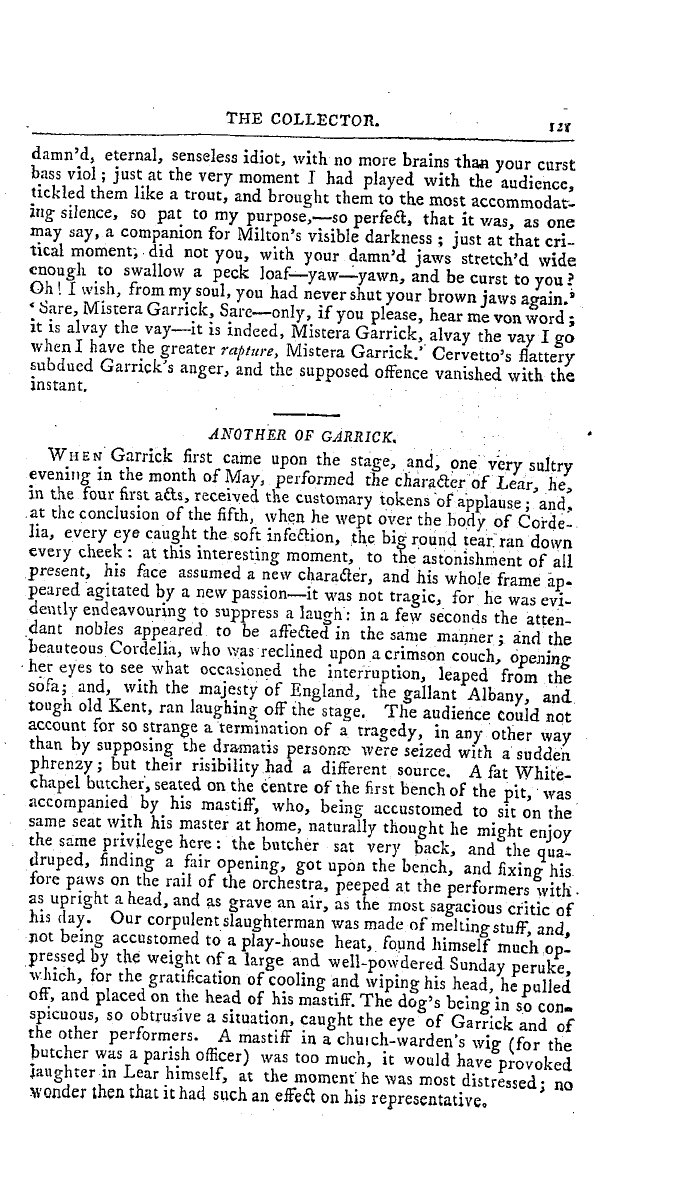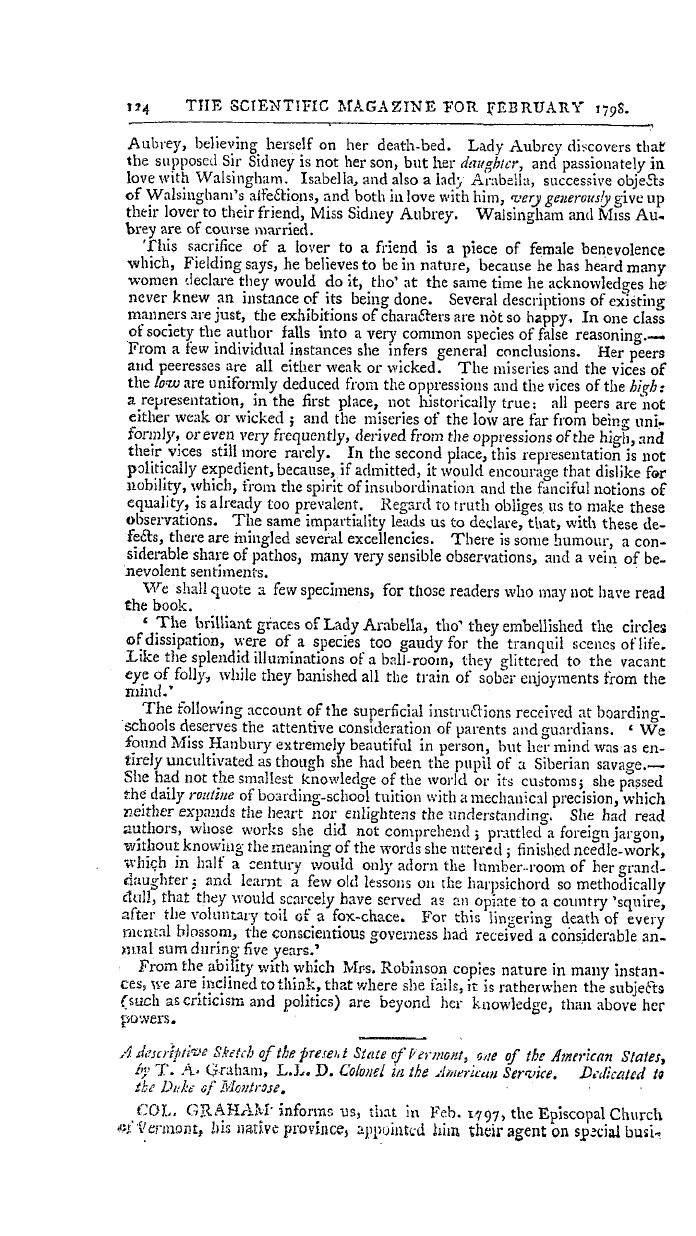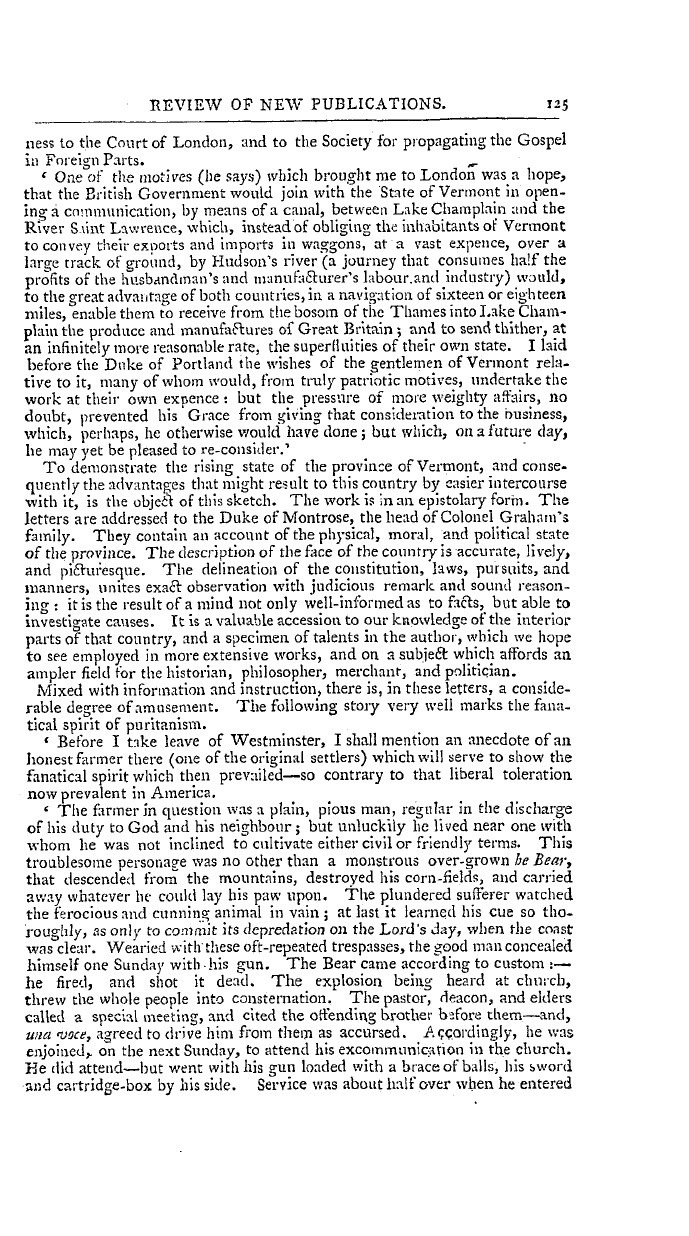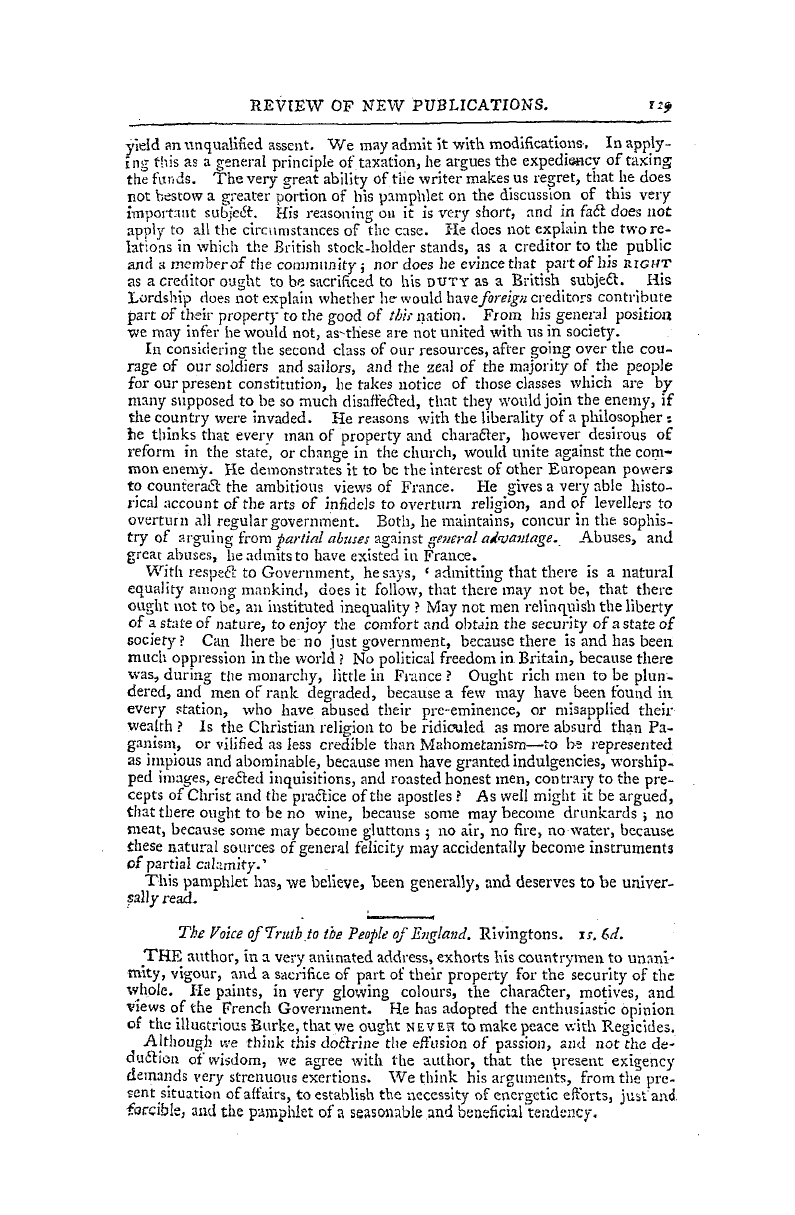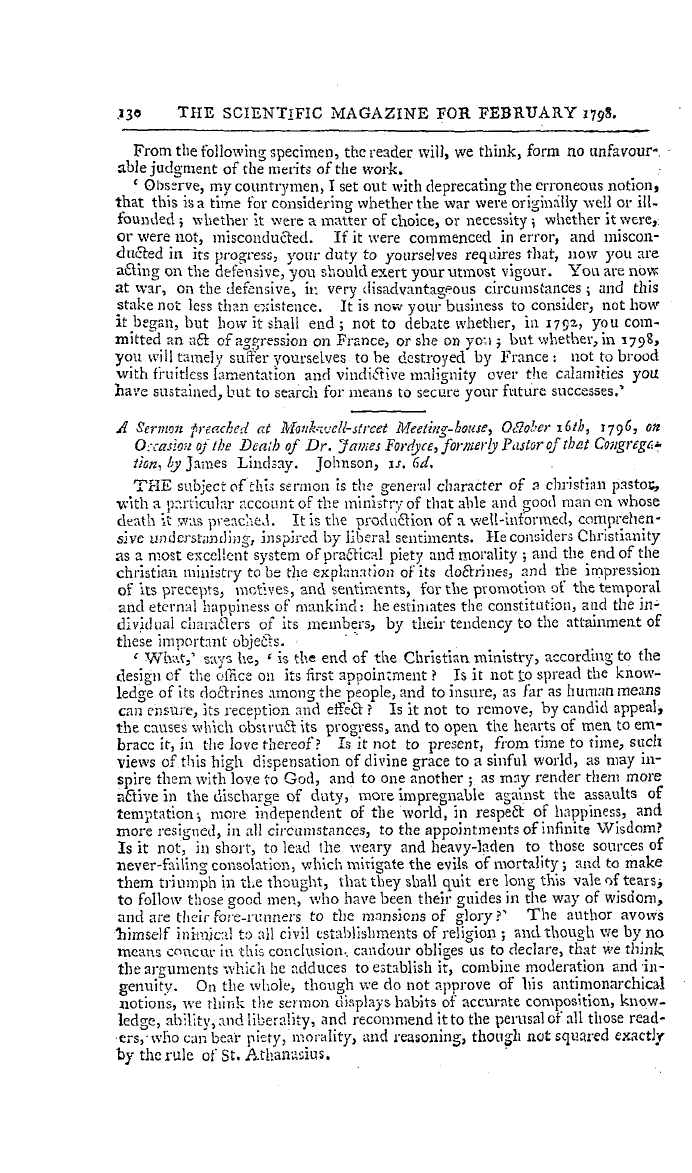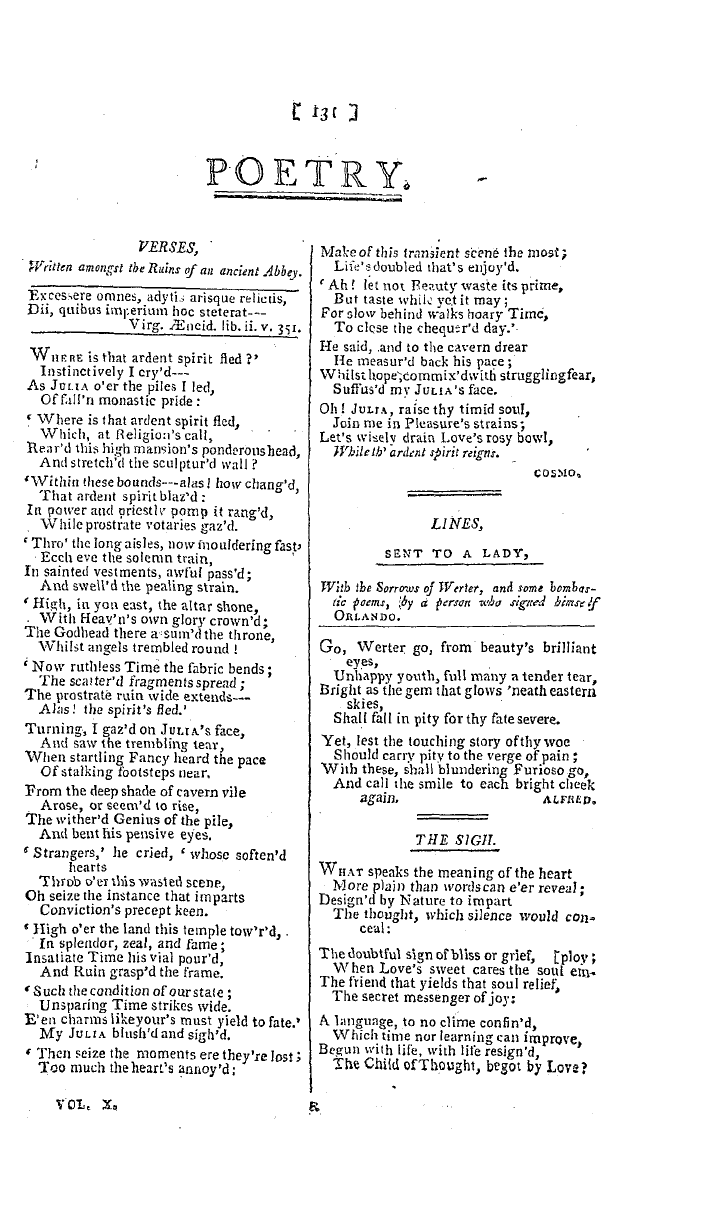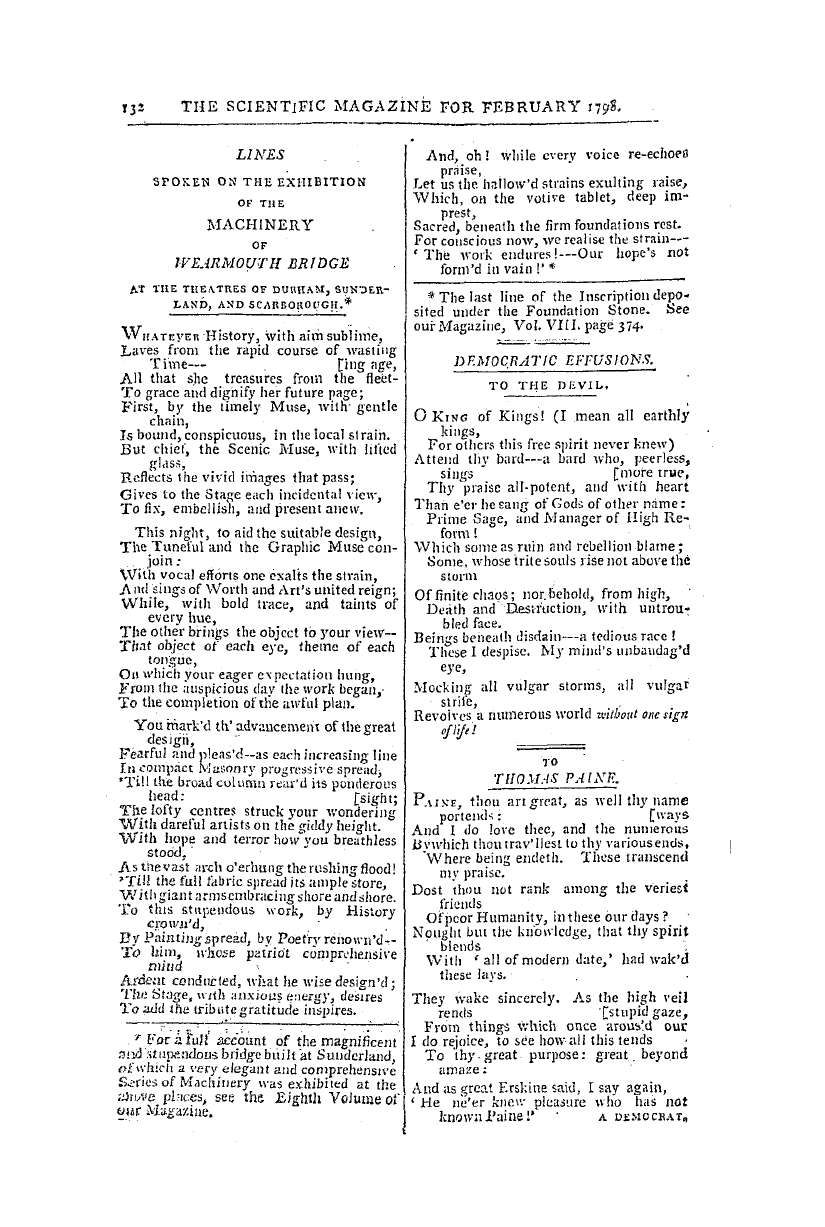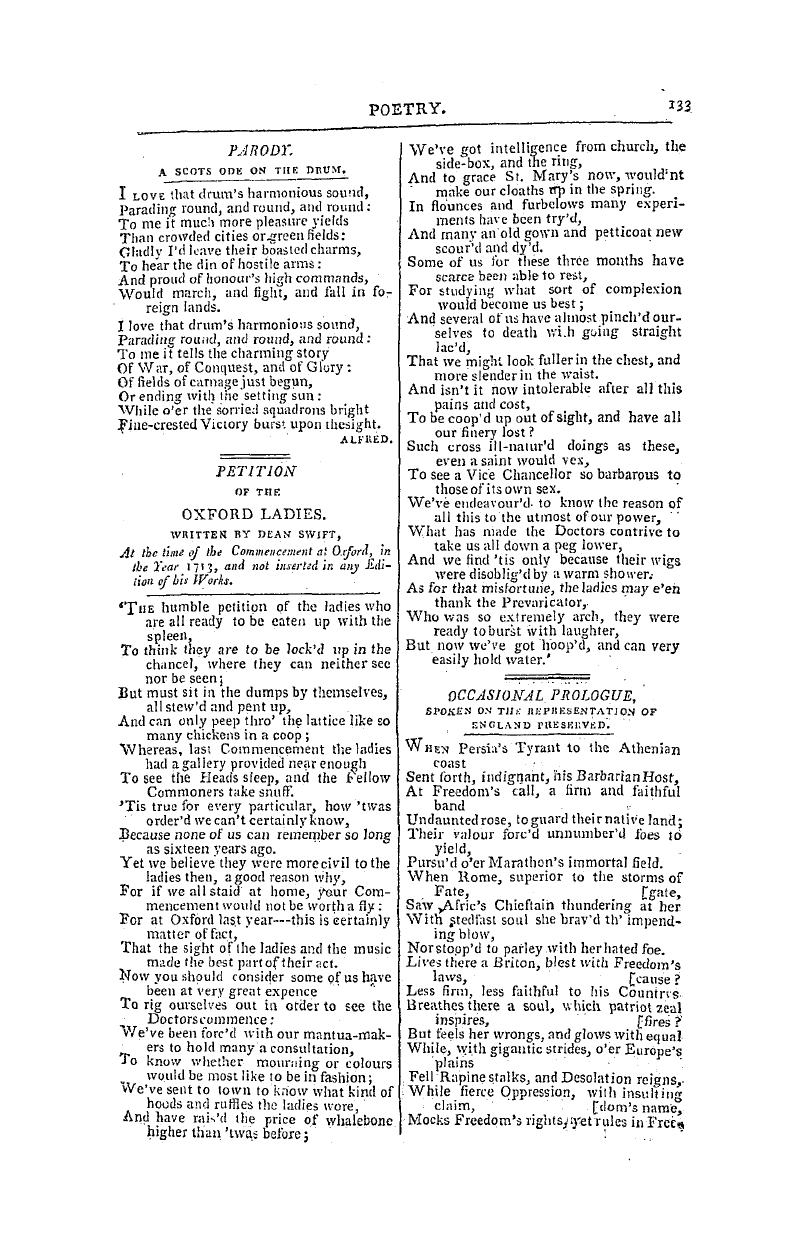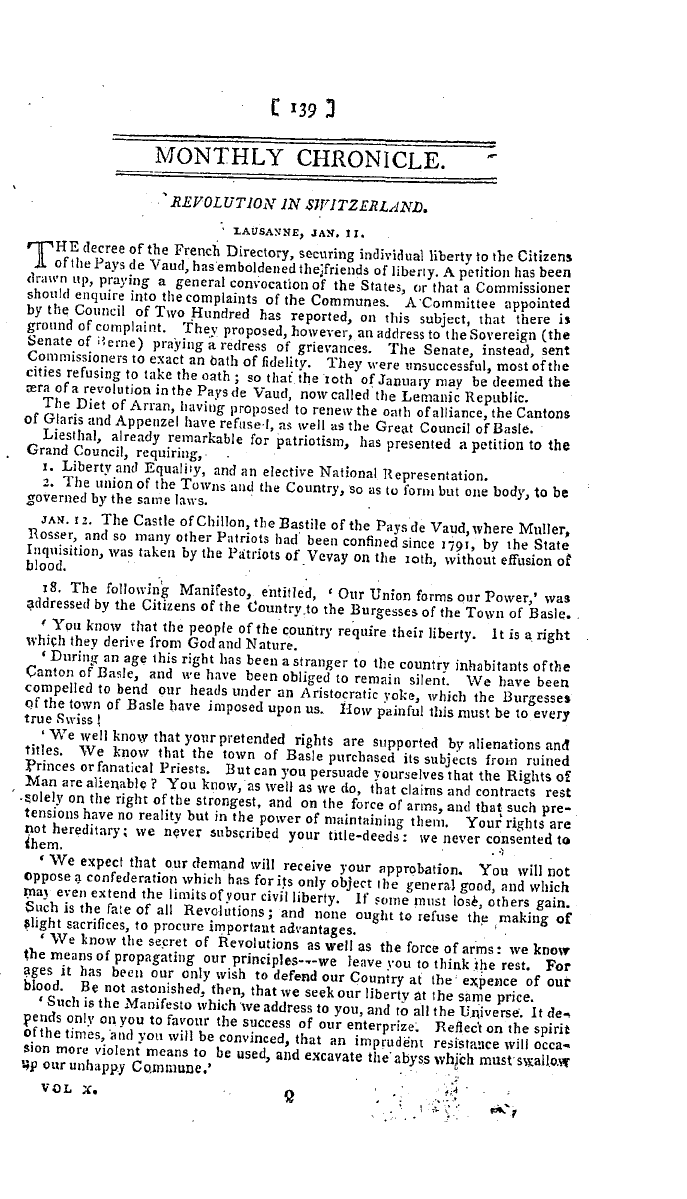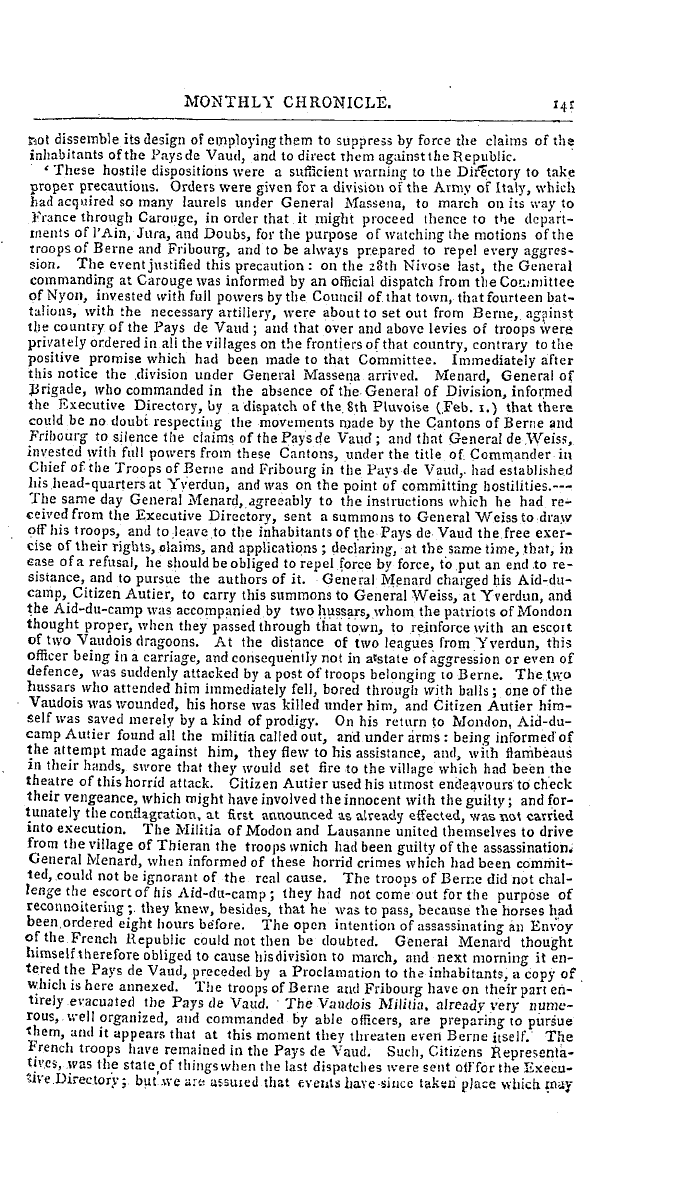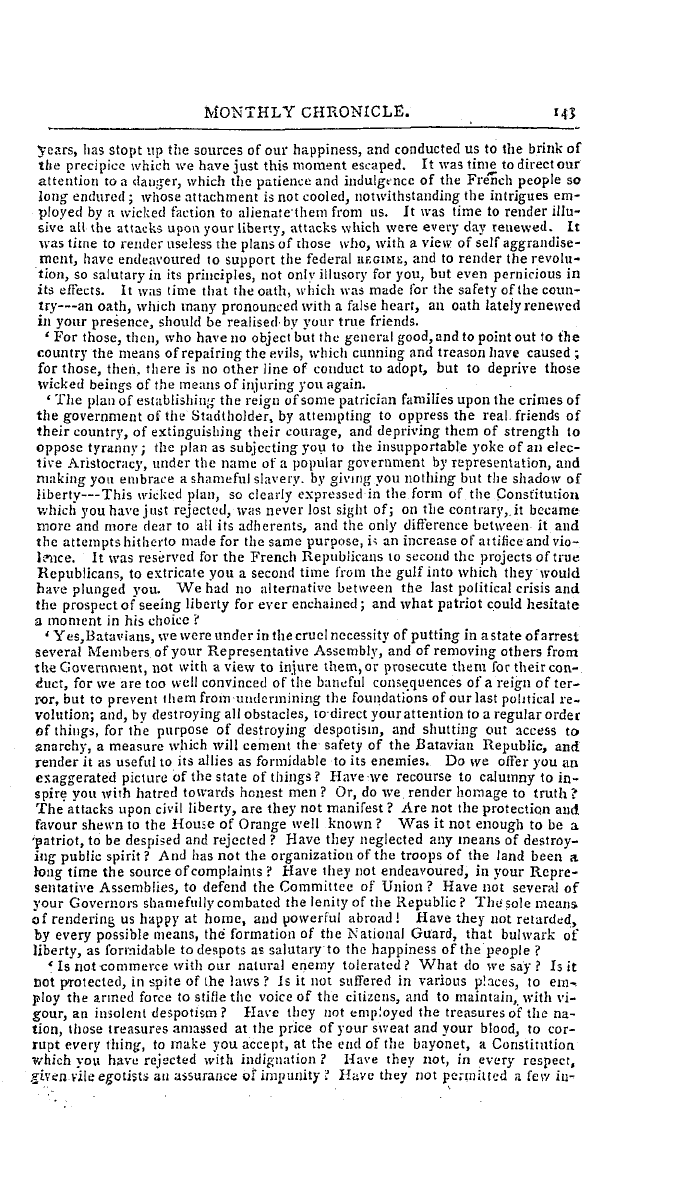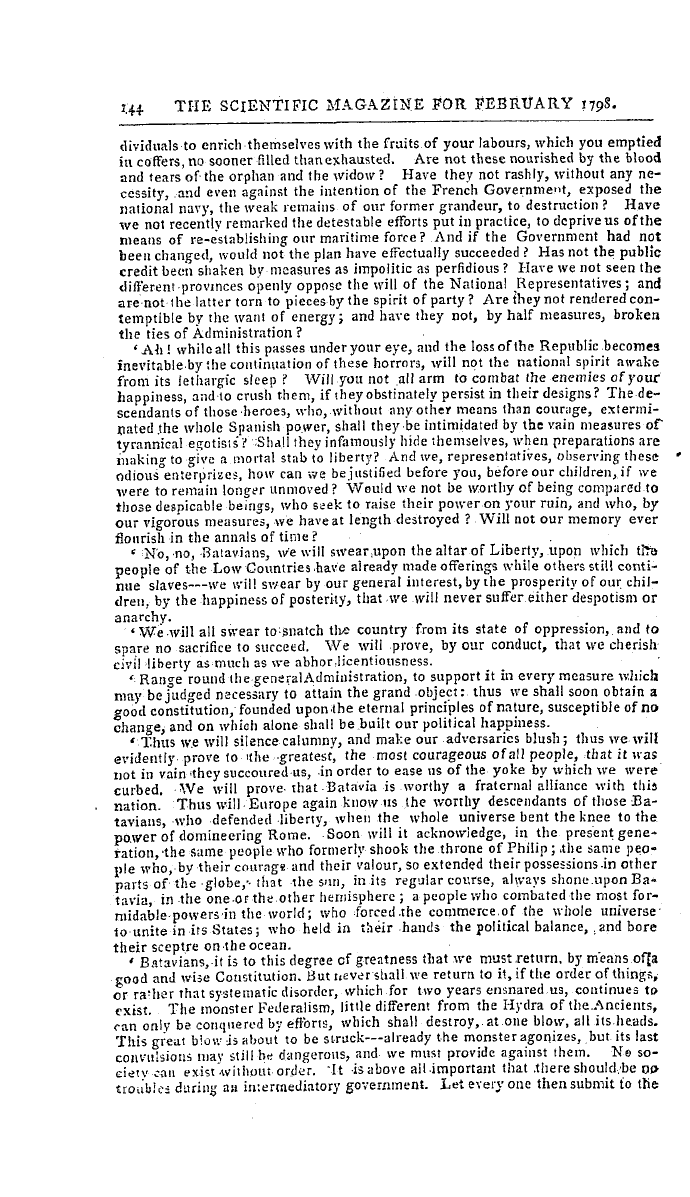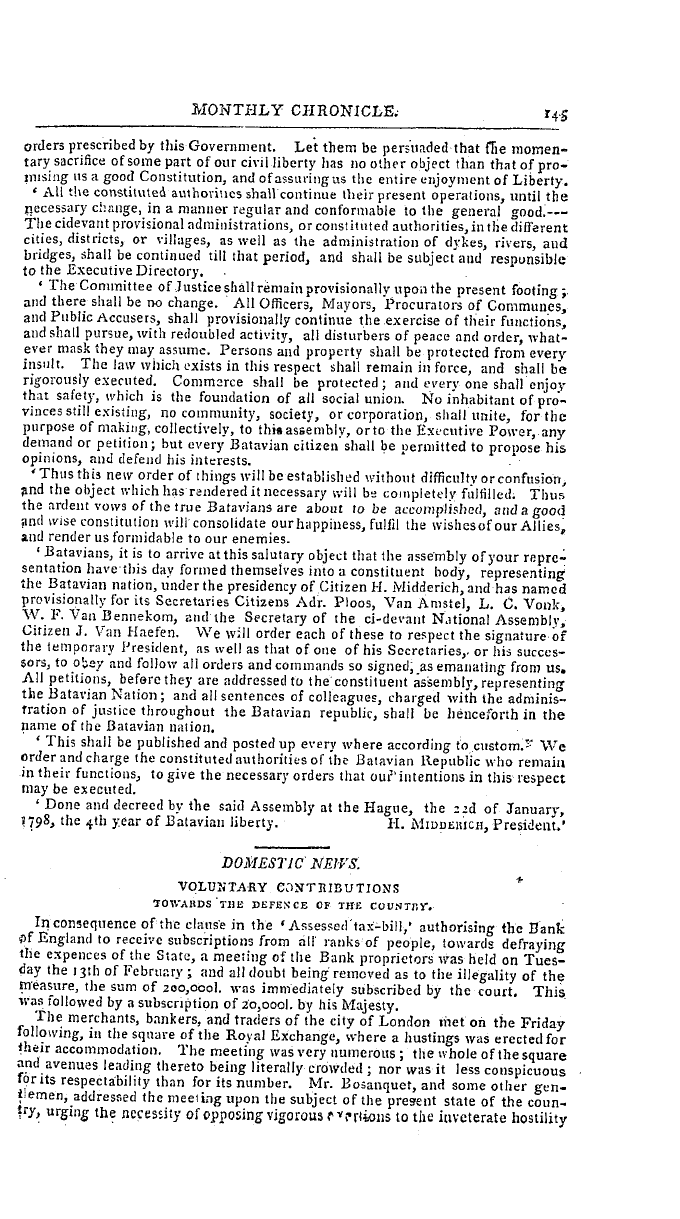-
Articles/Ads
Article REVIEW OF NEW PUBLICATIONS: ← Page 5 of 8 →
Note: This text has been automatically extracted via Optical Character Recognition (OCR) software.
Review Of New Publications:
into the lake with one of those empty vessels upon his head , and walks gently towards a bird ; and lifting up his arm , draws it down below ^ he surface of the water , without any disturbance , or giving alarm to the rest , several of whom he treats in the same manner , until he fills the bag he has brought to hold his prey . ' The agility of the Chinese is thus exemplified . ' The watermen were uncommonly expert ; and it was not unusual to seea large boat entirely
managed by one man , wiio rowed , sailed , steered , and smoked his pipe at the same time . He held the sheet or strong rope belonging to the sail with one hand , he steered the boat with the other , and with his foot he pulled an oar , which he feathered at every stroke , as neatly as could be done by tbe hand . ' The tea-plant , and its process , is rather concisely , but clearly described . ' On the sides and tops of earthen embankments , dividing the garden grounds and groves of orangesthe tea-plant was , for the first timeseen
, , growing , like a common shrub , scattered carelessly about . In China , wherever it is regularly cultivated , it rises , from the . eed sown in rows , at the distance of about four feet from each other , in land kept free from weeds . It is seldom sown on flat or marshy ground , which is reserved for rice . Vast tracks of hilly land are planted with it , particularly in the province of Foc ' nien . Its peroendicular growth is impeded , for the convenienceof
collectingits leaves , which is done first in spring , and twice afterwards , in the course of the summer . Its long and tender branches spring up , almost from the root , without any intervening naked trunk . It is bushy , like a rose-tree , and the expanded petals of " the flower bear some resemblance to that of the rose . Every information received concerning the tea-plant concurred in affirming that its qualities depended both upon , the soil in which it grew , and the age at which the leaves were p lucked off the tree , as well as upon the
managej ' nent of them afterwards . The largest and oldest leaves , which are the least esteemed , and destined for the use of the lowest classes of the people , are often exposed to sale , with little previous manipulation , and still retaining that kind of vegetable taste , which is common to most fresh plants , but which vanishes in a little time ; whilst the more essential flavour , characteristic of each particular vegetable , remains long without diminution . The young leaves undergo no inconsiderable preparation before they are delivered to the purchaser . Every leaf passes through the fingers of a female , who rolls it up almost to the form it had assumed before it became expanded in the progress of its growth . It is afterwards ulaced noon thin niates of earthen ware , or
iron , made much thinner than can be executed by artists out of China . It is confidently said in the country ,, that no plates of copper are ever employed for that purpose . Indeed , scarcely any utensil used in China is of that metal , the chief application of which is for coin . The earthen or iron plates are placed over a charcoal fire , which draws all remaining moisture from the leaves , rendering them dry and crisp . The colour and astringency of green tea is thought to be derived from the early period at which the leaves are
plucked , and ivhich , like unripe fruit , are generally green ancl acrid . The tea is packed in large chests , lined with very thin plates of lead , and the dried leaves of some large vegetable . It is too true , that the tea is pressed down into those chests by the naked feet of" Chinese labourers , as grapes are pressed by the wooden shoes of European peasants ; in which last case , the juices are purified by the subsequent fermentation . Notwithstanding this uncleanl y operation of Chinese packers , the upper ranks in China are as fond of tea as
the people are , and particulai ly solicitous in their choice of it . That of a good quality is dearer in Pekin than in London . ' ' A plant , very like the tea , flourished , at this time , pn the sides and the very tops of mountains , where the soil consisted of little more than frag-
Note: This text has been automatically extracted via Optical Character Recognition (OCR) software.
Review Of New Publications:
into the lake with one of those empty vessels upon his head , and walks gently towards a bird ; and lifting up his arm , draws it down below ^ he surface of the water , without any disturbance , or giving alarm to the rest , several of whom he treats in the same manner , until he fills the bag he has brought to hold his prey . ' The agility of the Chinese is thus exemplified . ' The watermen were uncommonly expert ; and it was not unusual to seea large boat entirely
managed by one man , wiio rowed , sailed , steered , and smoked his pipe at the same time . He held the sheet or strong rope belonging to the sail with one hand , he steered the boat with the other , and with his foot he pulled an oar , which he feathered at every stroke , as neatly as could be done by tbe hand . ' The tea-plant , and its process , is rather concisely , but clearly described . ' On the sides and tops of earthen embankments , dividing the garden grounds and groves of orangesthe tea-plant was , for the first timeseen
, , growing , like a common shrub , scattered carelessly about . In China , wherever it is regularly cultivated , it rises , from the . eed sown in rows , at the distance of about four feet from each other , in land kept free from weeds . It is seldom sown on flat or marshy ground , which is reserved for rice . Vast tracks of hilly land are planted with it , particularly in the province of Foc ' nien . Its peroendicular growth is impeded , for the convenienceof
collectingits leaves , which is done first in spring , and twice afterwards , in the course of the summer . Its long and tender branches spring up , almost from the root , without any intervening naked trunk . It is bushy , like a rose-tree , and the expanded petals of " the flower bear some resemblance to that of the rose . Every information received concerning the tea-plant concurred in affirming that its qualities depended both upon , the soil in which it grew , and the age at which the leaves were p lucked off the tree , as well as upon the
managej ' nent of them afterwards . The largest and oldest leaves , which are the least esteemed , and destined for the use of the lowest classes of the people , are often exposed to sale , with little previous manipulation , and still retaining that kind of vegetable taste , which is common to most fresh plants , but which vanishes in a little time ; whilst the more essential flavour , characteristic of each particular vegetable , remains long without diminution . The young leaves undergo no inconsiderable preparation before they are delivered to the purchaser . Every leaf passes through the fingers of a female , who rolls it up almost to the form it had assumed before it became expanded in the progress of its growth . It is afterwards ulaced noon thin niates of earthen ware , or
iron , made much thinner than can be executed by artists out of China . It is confidently said in the country ,, that no plates of copper are ever employed for that purpose . Indeed , scarcely any utensil used in China is of that metal , the chief application of which is for coin . The earthen or iron plates are placed over a charcoal fire , which draws all remaining moisture from the leaves , rendering them dry and crisp . The colour and astringency of green tea is thought to be derived from the early period at which the leaves are
plucked , and ivhich , like unripe fruit , are generally green ancl acrid . The tea is packed in large chests , lined with very thin plates of lead , and the dried leaves of some large vegetable . It is too true , that the tea is pressed down into those chests by the naked feet of" Chinese labourers , as grapes are pressed by the wooden shoes of European peasants ; in which last case , the juices are purified by the subsequent fermentation . Notwithstanding this uncleanl y operation of Chinese packers , the upper ranks in China are as fond of tea as
the people are , and particulai ly solicitous in their choice of it . That of a good quality is dearer in Pekin than in London . ' ' A plant , very like the tea , flourished , at this time , pn the sides and the very tops of mountains , where the soil consisted of little more than frag-















































